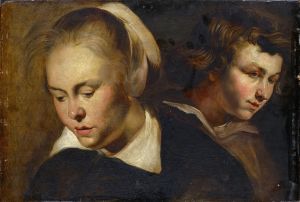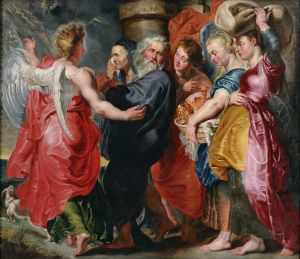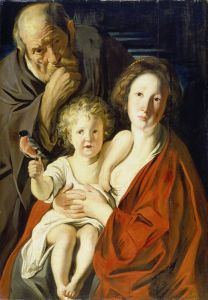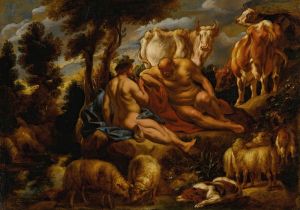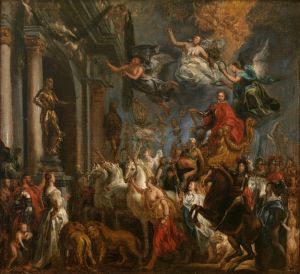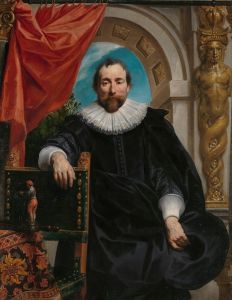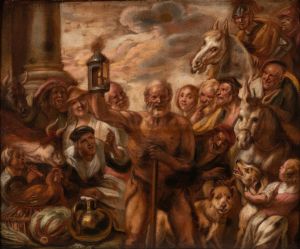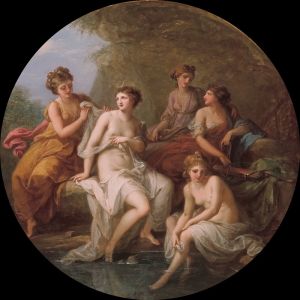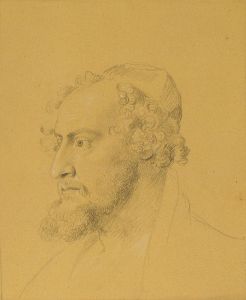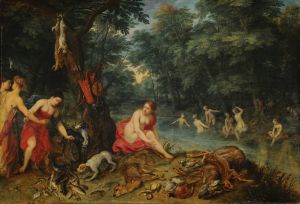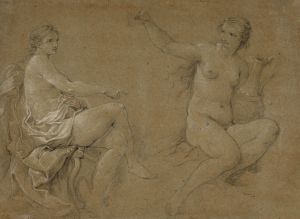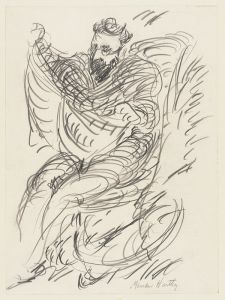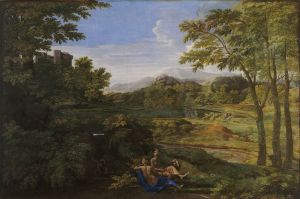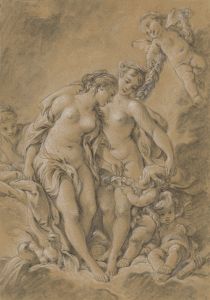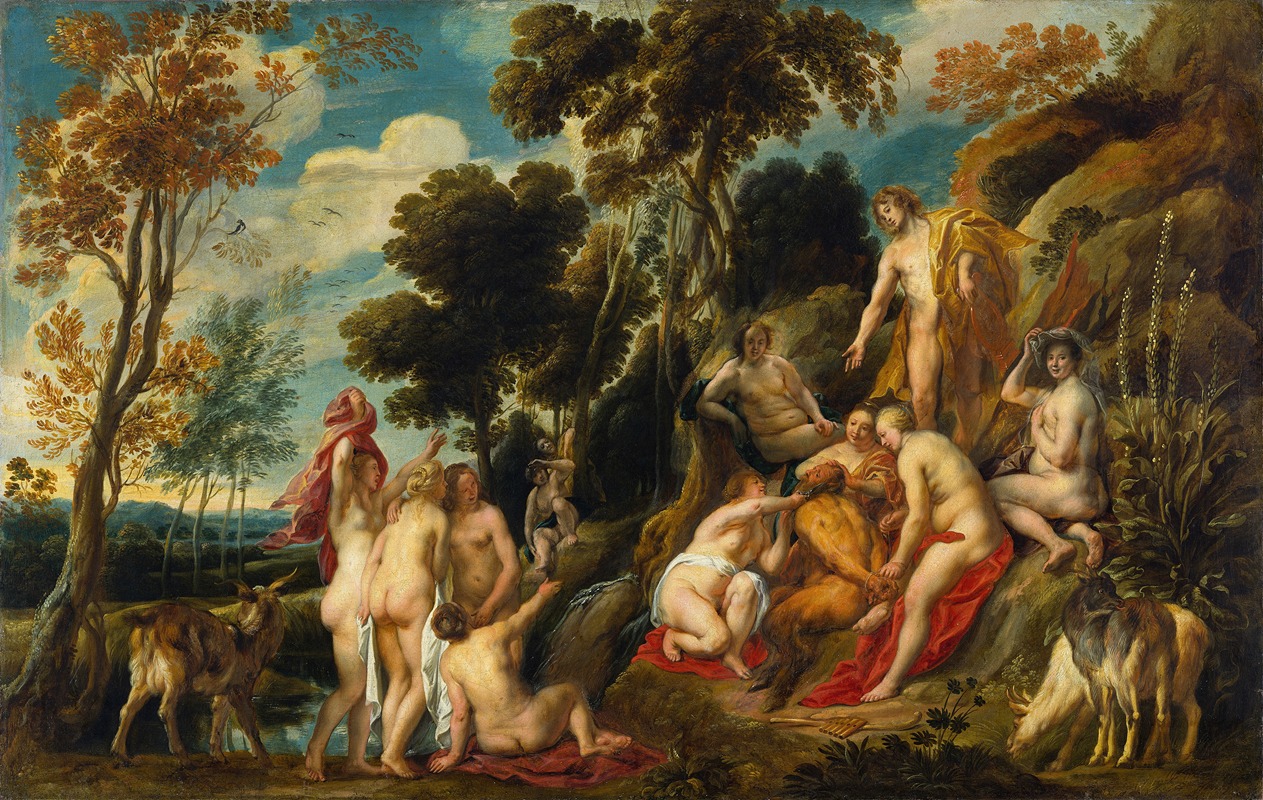
Nymphs Cutting Off Pan’s Beard
A hand-painted replica of Jacob Jordaens’s masterpiece Nymphs Cutting Off Pan’s Beard, meticulously crafted by professional artists to capture the true essence of the original. Each piece is created with museum-quality canvas and rare mineral pigments, carefully painted by experienced artists with delicate brushstrokes and rich, layered colors to perfectly recreate the texture of the original artwork. Unlike machine-printed reproductions, this hand-painted version brings the painting to life, infused with the artist’s emotions and skill in every stroke. Whether for personal collection or home decoration, it instantly elevates the artistic atmosphere of any space.
Jacob Jordaens' painting Nymphs Cutting Off Pan’s Beard is a work by the renowned Flemish Baroque artist, who was active during the 17th century. Jordaens, a contemporary of Peter Paul Rubens and Anthony van Dyck, is celebrated for his dynamic compositions, vibrant use of color, and ability to depict mythological and allegorical themes with a sense of drama and humor.
The painting depicts a scene from classical mythology, where nymphs, often associated with nature and the divine, are shown cutting the beard of Pan, the Greek god of the wild, shepherds, and flocks. Pan is traditionally portrayed as a half-man, half-goat figure, symbolizing untamed nature and primal instincts. The act of cutting his beard can be interpreted as a moment of humiliation or subjugation, though the exact narrative context of this scene is not explicitly documented in classical sources. Jordaens' interpretation of this mythological moment reflects his ability to infuse classical themes with a sense of playfulness and theatricality.
The composition of the painting is characteristic of Jordaens’ style, with a focus on robust, fleshy figures and a lively interplay of movement and expression. The nymphs are depicted with a sense of vitality, their gestures and facial expressions conveying a mix of mischief and determination. Pan, on the other hand, is rendered with a sense of vulnerability, his usually dominant and wild persona subdued in this moment. The use of light and shadow enhances the drama of the scene, drawing the viewer’s attention to the central action.
Jordaens often incorporated moral or humorous undertones into his works, and this painting may reflect a similar approach. However, without specific historical documentation, the exact intent behind this depiction remains unclear. The painting exemplifies the Baroque era’s fascination with mythology, human emotion, and the interplay between the divine and the earthly.
The exact date of the painting’s creation is not definitively known, but it is generally attributed to Jordaens’ mature period, when he was at the height of his artistic career. The work is held in a private collection, and its provenance and exhibition history are not extensively documented in public records.
As with many of Jordaens’ works, Nymphs Cutting Off Pan’s Beard demonstrates the artist’s skill in blending classical themes with a distinctly Flemish sensibility, making it a notable example of his contribution to Baroque art.





